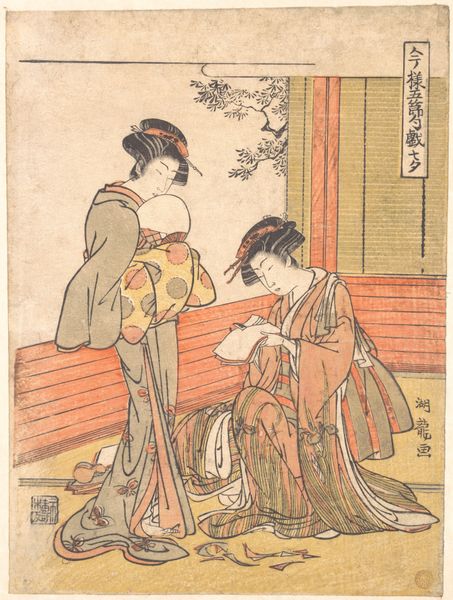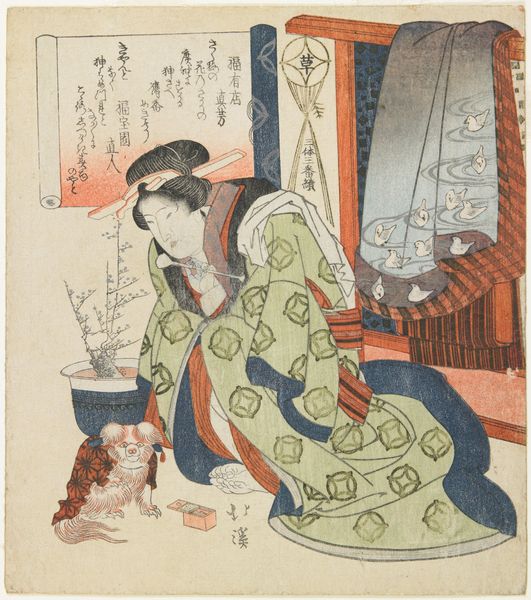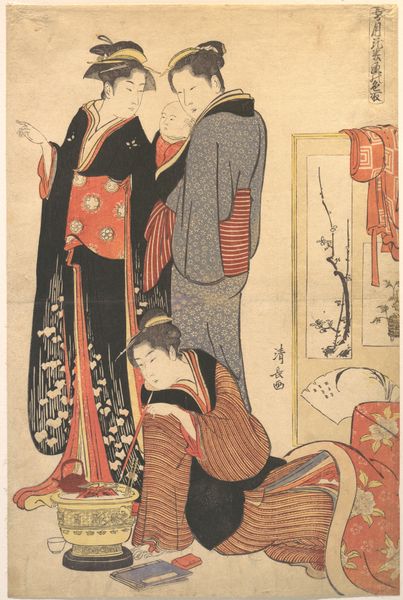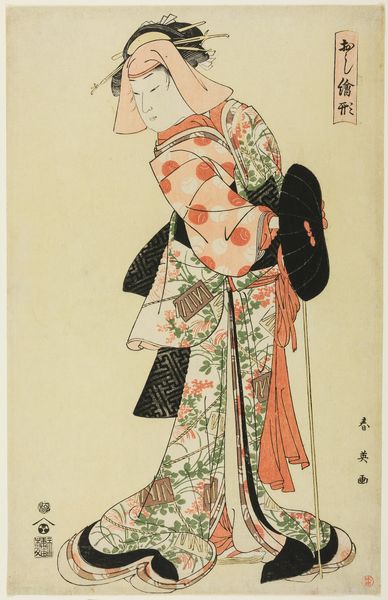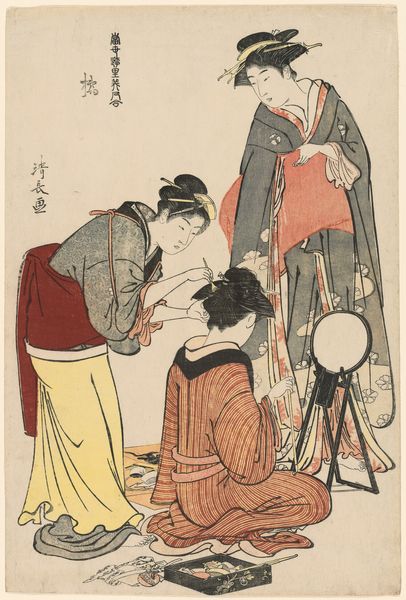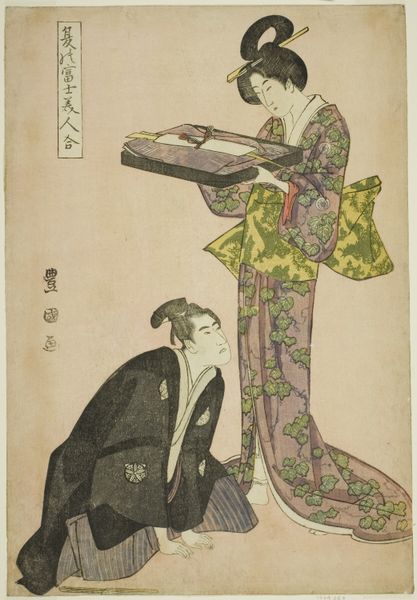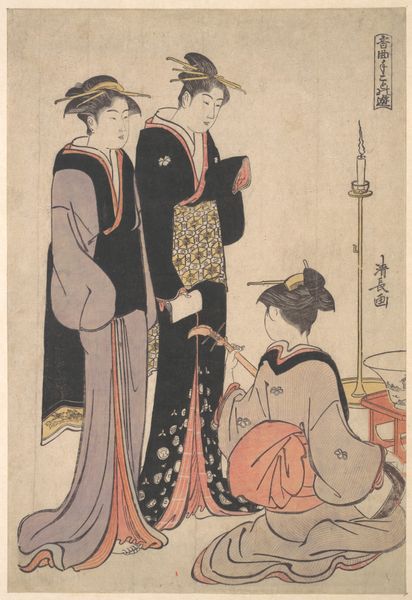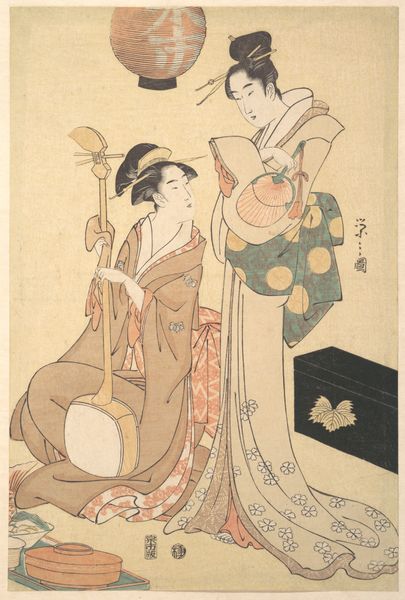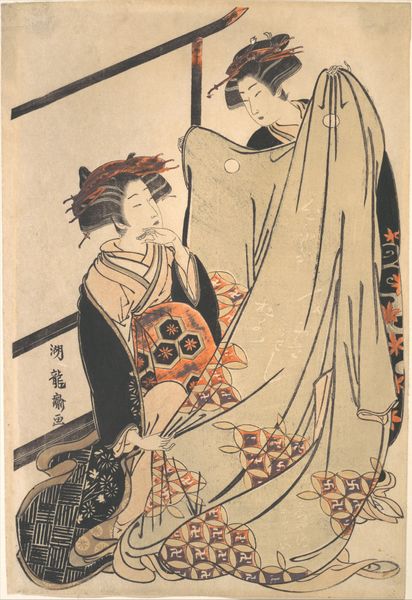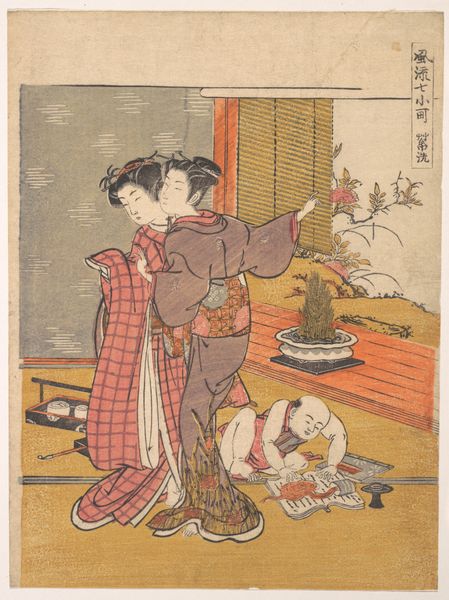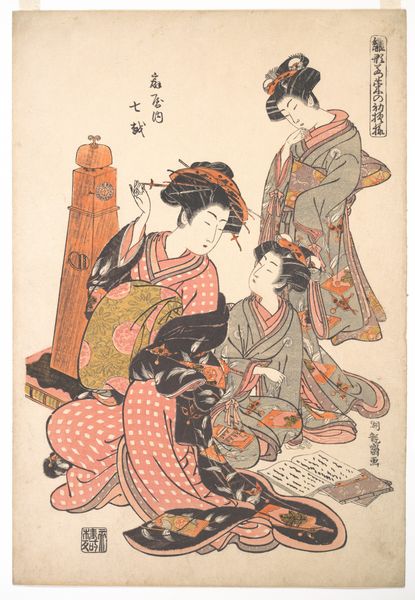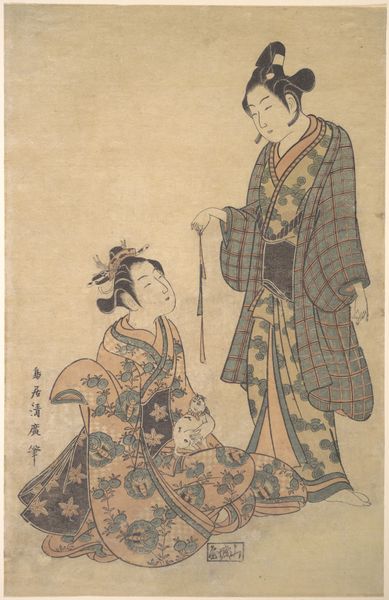
print, woodblock-print
# print
#
asian-art
#
ukiyo-e
#
woodblock-print
#
genre-painting
Dimensions: 14 1/8 x 9 7/8 in. (35.9 x 25.1 cm)
Copyright: Public Domain
Curator: Let's take a look at this ukiyo-e woodblock print titled "Two Women Feeding Fish" by Kitao Shigemasa, dating from the late 18th century, early 19th century. It is currently part of the collection at the Metropolitan Museum of Art. Editor: It's charming! A calm, quiet scene. The women’s elegant stillness is echoed by the placid surface of the water. The fish themselves provide the only spots of bright color. Curator: Ukiyo-e prints, literally "pictures of the floating world," were closely tied to the burgeoning urban culture of Edo period Japan. It's interesting to consider this work within the broader context of print production during that time. We see a shift toward portraying not just actors or courtesans, but more everyday scenes of leisure. Editor: Yes, and the fish are important here, of course. Goldfish were a highly prized status symbol at that time, associated with wealth and luxury. Seeing them kept in such a simple container creates a curious juxtaposition, one that really emphasizes the deliberate cultivation of beauty as a pursuit. Curator: Exactly. Owning such fish certainly signified access to luxury, but then you see these images replicated and distributed as relatively affordable prints. In a sense, art allows the everyday person to participate in this display of wealth and refinement. It shows us how class and visual representation were intertwined. Editor: And that symbolic value! The colors alone-- the splash of fiery orange against muted indigo and earth tones-- speak volumes about desire, spectacle, and even good fortune. I suspect viewers understood then, as now, that goldfish pointed to auspicious themes, good luck in the future. Curator: It's precisely this circulation of imagery that fascinates me – how prints such as this contribute to the creation of societal norms and tastes, not just in Japan but influencing western perceptions of Japan, too. The women depicted become models, archetypes, for how people understand feminine grace. Editor: It’s beautiful to trace how enduring certain symbols and cultural meanings can be, while the modes of expression inevitably transform across centuries and continents. It’s what makes images such powerful time capsules. Curator: Definitely food for thought... or maybe for the fish, in this case. Editor: Yes! And with that, I will return to thinking about all those shimmering fish.
Comments
No comments
Be the first to comment and join the conversation on the ultimate creative platform.
